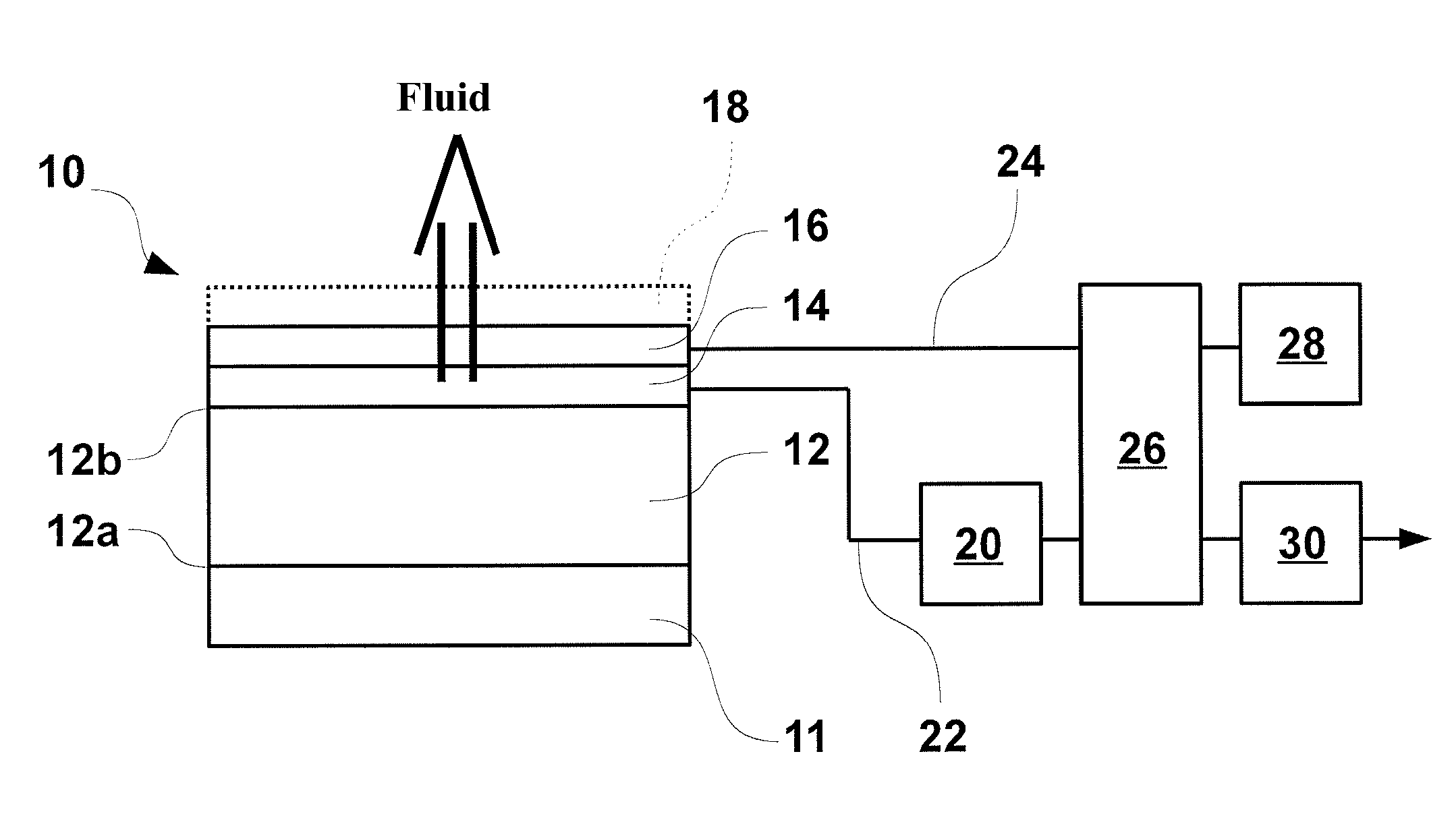Microsensor produced in microsystem technologies for the measurement and/or detection of fouling
a microsystem technology and microsensor technology, applied in thermometers, instruments, material thermal analysis, etc., can solve the problems of affecting the performance of such installations, serious adverse effects on the progression of industrial processes, and intervention can represent tedious tasks for personnel, and achieve reliable measurements over time
- Summary
- Abstract
- Description
- Claims
- Application Information
AI Technical Summary
Benefits of technology
Problems solved by technology
Method used
Image
Examples
first embodiment
[0157]As shown schematically in FIG. 1a, a sensor 10 produced by using microsystem manufacturing technologies according to the invention comprises several operating elements assembled with one another on a substrate 12 with two opposite surfaces 12a, 12b, i.e.:[0158]At least one heating element 14 made in the form of a layer that is deposited on the surface 12b of the substrate 12 and that diffuses, on command, a monitored homogenous heat flow,[0159]At least one temperature measuring element 16 that is made in the form of a layer that is deposited on the layer 14 and that is located in such a way as to be in the most homogeneous part of the dissipated heat flow (when there is only one element 16 and it is at the center of the active zone of the heating element or elements),[0160]A heat insulator 11 in contact with the surface 12a of the substrate (the insulator is, for example, a Teflon block that is 400 μm thick with 0.25 W / mK of heat conductivity),[0161]And, optionally, at least o...
second embodiment
[0177]FIG. 1b illustrates a sensor 10 made by using, for example, microsystem manufacturing technologies according to the invention.
[0178]The operating elements already described in relation to the sensor illustrated in FIG. 1a remain the same and are therefore not described again.
[0179]The arrangement of the sensor of FIG. 1b is different from that of FIG. 1a to the degree in which the heating element 14 and the temperature measuring element 16 are located, not on the same side of the substrate 12, but on either side of the latter.
[0180]Actually, the temperature measuring element 16 is located facing the surface 12b of the substrate and, for example, in contact with the latter (while one or several intermediate layers can be located between these two elements), and the heating element 14 is located between the surface 12a of the substrate and the heat insulator 11.
[0181]In this arrangement, the two operating elements 14 and 16 of the sensor are spaced apart from one another at a di...
PUM
| Property | Measurement | Unit |
|---|---|---|
| temperature | aaaaa | aaaaa |
| surface area | aaaaa | aaaaa |
| surface area | aaaaa | aaaaa |
Abstract
Description
Claims
Application Information
 Login to View More
Login to View More - R&D
- Intellectual Property
- Life Sciences
- Materials
- Tech Scout
- Unparalleled Data Quality
- Higher Quality Content
- 60% Fewer Hallucinations
Browse by: Latest US Patents, China's latest patents, Technical Efficacy Thesaurus, Application Domain, Technology Topic, Popular Technical Reports.
© 2025 PatSnap. All rights reserved.Legal|Privacy policy|Modern Slavery Act Transparency Statement|Sitemap|About US| Contact US: help@patsnap.com



